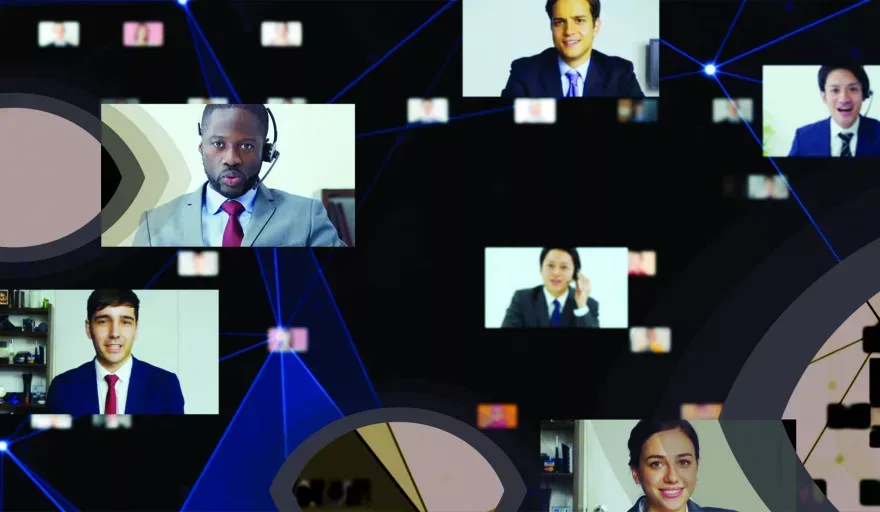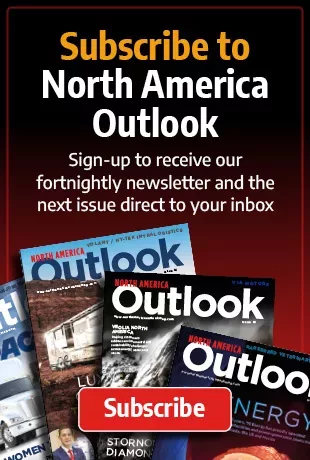Kimberly Kellermann, Vice President of Greif’s Global Industrial Packaging division, reflects on the challenges and rewards of leading a global manufacturing business through the COVID-19 pandemic
Written by: Kimberly Kellermann, Vice President of Greif’s Global Industrial Packaging division
INTRODUCTION
Almost a year on from the world going into lockdown in response to COVID-19, as business leaders it feels important that we make time to take stock and learn from the surprising turn our working lives have taken.
As Vice President of Greif’s Global Industrial Packaging division, a $2.8 billion industrial packaging products and services business with facilities and offices around the world – before 2020 I travelled significantly. This stopped overnight and I found myself faced with the daunting task of leading a global manufacturing business from my home in Ohio. Like all organizations, Greif was forced to transform at pace, adapting ways of working, core processes and protocols. Each day seemed to bring new headlines, problems, guidance and legislation.
ADAPTING OPERATIONS
As a manufacturer of industrial packaging, Greif is classed as an essential service provider and our facilities have remained open throughout the pandemic. With leadership working remotely, our immediate and overwhelming priority was keeping our colleagues and their families safe. How could we keep the risk of COVID-19 to an absolute minimum in our facilities?
A global COVID taskforce was quickly set up to establish protocols and procedures. We recognized the need to engage families and sent care packages and messaging to our colleagues, reinforcing the importance of their work. They responded with pride and stepped up to the new ways of working with energy and positivity.
Like many manufacturing environments, we immediately introduced physical distancing, PPE, sanitizers, limits on visitors, and deep cleaning as needed. We worked hard to make sure instructions were clear and placed a relentless focus on protocols. Our approach appears to have been effective; whereas some companies have experienced plant shutdowns for long durations, we have managed this well. Our individual plant managers have done a fantastic job leading throughout this pandemic.
For non-production colleagues working from home, the challenges were very different. Although we had some video calls before, overnight we all had to become newscasters! As an organization, we worked on the basis we would be in it for the long haul, supplying tools and technology to colleagues around the world and providing guidelines for how to conduct video calls. Training was provided for many different platforms with an emphasis on how to make every interaction professional and engaging. With face-to-face contact impossible, we wanted everyone interacting positively on video.
TECHNOLOGICAL CHALLENGES
Differences in technology globally have proved a challenge, with Greif locations spanning the United States, Asia, Europe and Africa. We have a regional IT support model and this has proved effective in resolving issues such as variable bandwidth and shortage of hardware. Virtual training has also proved challenging, although we’re increasingly happy with the approach we’re taking and are getting great feedback from colleagues. We have developed specific materials, delivered concise sessions to small groups across different facilities, and supplemented group training with information at a local level.
Interactive virtual plant tours enable us to maintain a presence in production facilities. Getting the technology right took some experimentation – we soon discovered that video stabilizers were needed to counteract motion and headsets had to be noise cancelling to cut out ambient sound. With technical glitches sorted, we are successfully keeping in touch with colleagues on the ground, carrying out factory acceptance tests, and troubleshooting in our virtual platform. In fact, we have a plan to visit over 100 of our sites virtually in 2021.
Our sales and commercial teams typically travel up to 80 percent of the time and the need to work remotely has hit them particularly hard. With customer interactions gone, how do you sell a value proposition virtually? This has been a learning process for some, particularly those who don’t like being on camera. Our customers are equally stretched thanks to COVID and it can be hard to get time with them. We have introduced new KPIs and ways of measuring sales performance to enable us to continue meeting the needs of our customers.
LESSONS LEARNED
In summary, what have we learned from the past year? Are there positives? What can we build on moving forwards?
Although face-to-face contact is sorely missed by colleagues working remotely, virtual interaction has become increasingly efficient and effective. Personally, I am finding it extremely rewarding to be able to connect with people across and beyond the business so quickly. We recently had over 130 customers on a webinar for a full hour – an unprecedented level of connectivity.
The changes in working patterns have enabled us to stand back, look at what wasn’t adding value in the past, and eliminate it. The reduction in travel alone has resulted in significant cost savings, as well as being great from an environmental perspective.
But perhaps the greatest positive to take from the way Greif – and manufacturing as a whole – has responded to the global pandemic is its willingness to embrace change. As a sector known for its traditional stance, the flexibility being shown by workforces and facilities around the world has been remarkable. I firmly believe that this accelerated change will continue far beyond COVID and will enable us to respond to whatever challenges lie ahead.
ABOUT THE EXPERT
Kimberly Kellermann, Vice President of Global Operations, Greif – Global Industrial Packaging
After spending two years as Vice President of Operations and EH&S, Kimberly Kellermann now extends her vast expertise to Greif’s Global Industrial Packaging division as Vice President of Global Operations. As a member of the Global Industrial Packaging Leadership Team, Kimberly leads the strategic direction for over 150 Greif sites and the multi-year business strategy, deployment, execution and governance of Greif’s $2.8 billion industrial packaging business. She also spearheads the division’s Safety Leadership Program.
Kimberly previously spent 17 years with Boehringer Ingleheim. She holds a BS degree in Industrial and Systems Engineering and an Executive MBA, both from The Ohio State University.




































